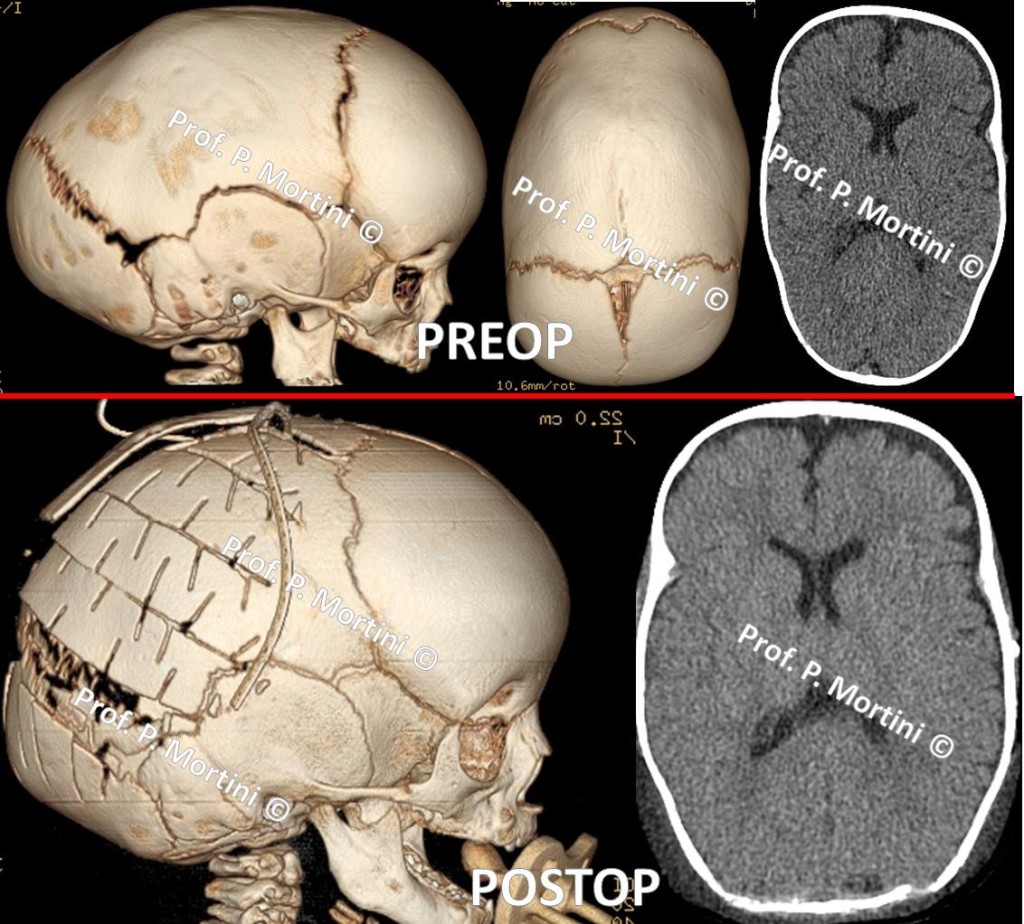Included under Craniofacial Anomalies are a rather large number of conditions that can affect the shape of a child’s head and face.
When a baby is born the skull bone is really a collection of many smaller bones which abut one another at sites known as sutures. As the brain grows, the sutures allow for rapid expansion in a symmetrical fashion. If for any reason one or more sutures closes too early the brain is forced to grow in a different direction where the bones are not resisting growth.
This condition is known as craniosynostosis or craniostenosis. Some of these conditions are inherited and associated with other developmental problems. The majority however are sporadic and not associated with developmental problems. Certain craniosynostoses can be detected at birth while others are not obvious for several months. The first year of life is usually the only significant time to diagnose and treat these conditions.
In some cases a physician can make the diagnosis by just examining the baby. In other cases a radiographic study may be needed as a 3 dimensional CT scan, though clearly certain conditions may be proven with a simple set of skull x-rays.
Unfortunately sometimes no single radiological test is adequate to make a clear diagnosis. In these cases it may be best to wait a few weeks to months to see if the condition is going to progress.
When surgery is required, the timing and type is very much dependent on the type of synostosis and the preferences of the neurosurgeon.
Often these operations are performed by a team of surgeons including a specially trained craniofacial plastic surgeon in addition to a neurosurgeon.
The majority of operations are performed in the first year of life, and some even in the first few months of life. At certain times, if you do not treat the synostosis, then pressure can build up in the head and cause injury to the brain. As best as can be known this is probably true in the minority of cases. What is true is that most of these conditions will cause a marked deformity to the skull and face that the child will have to live with for his entire life.
Most operations require rather extensive removal, recontouring and finally replacement of the skull. Often this is associated with blood loss sufficient to require a transfusion. Fortunately these operations are elective and blood donation can be performed.
Many different techniques are available to the surgeon to replace the bone securely at the end of the operation. In experienced hands, the results of surgery are usually excellent and only rarely would further surgery be required.
In resent years minimally invasive procedures have been also improved. In some cases the same bone removal is performed, in others a more limited removal of the fused suture is removed and then the child is placed in a special helmet to aid in the reconturing at the skull for the first year of life. These minimally invasive procedure are generally done at a young age, often in the first few months of life.
 English
English Italiano
Italiano